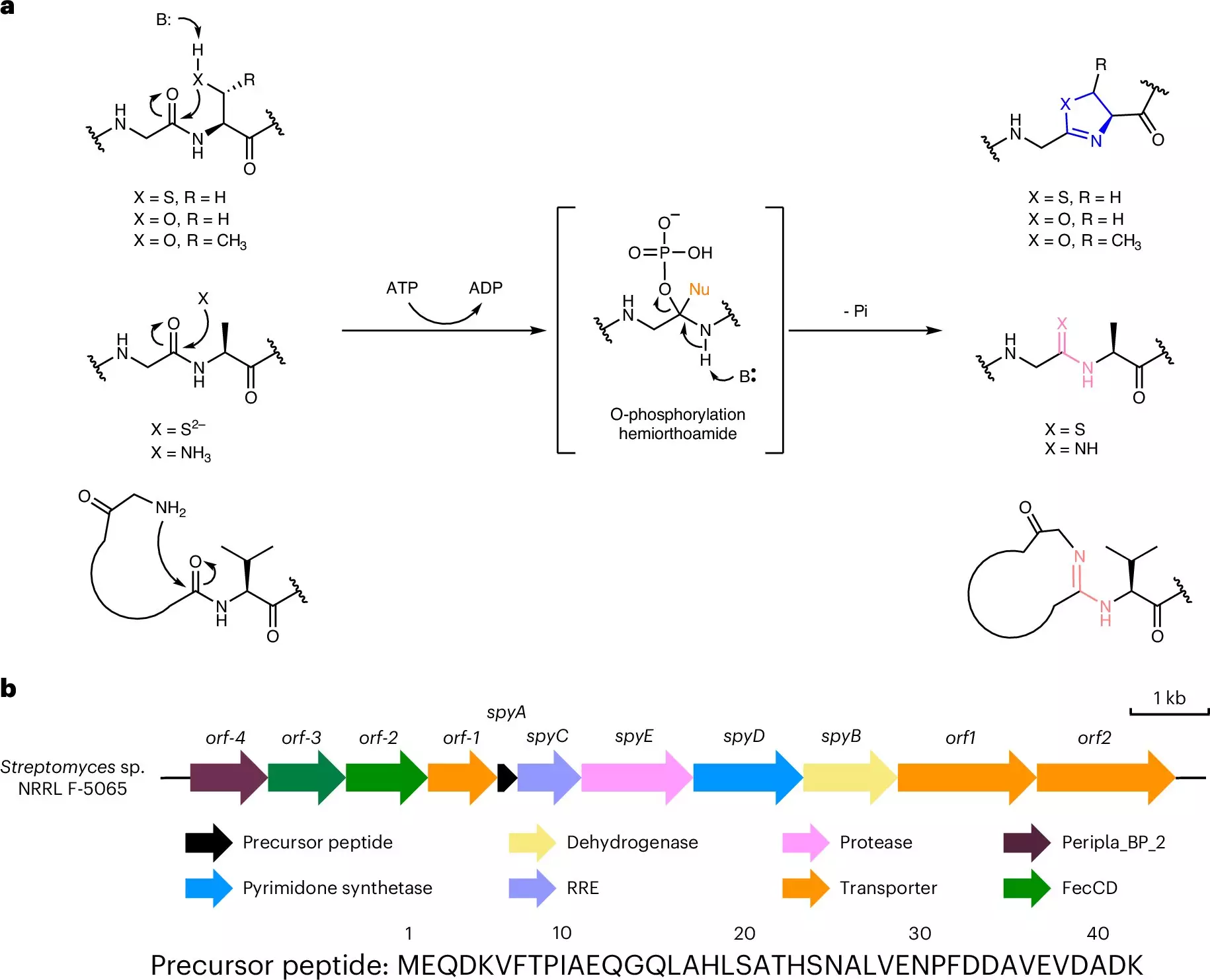In the realm of biotechnology, the integration of biology and chemistry continues to push the boundaries of what’s possible in medicine. A recent breakthrough in the development of biohybrid molecules, which marry DNA’s homing abilities with the versatile functionality of proteins, marks a significant step forward. This innovation heralds a new era in the creation of tailored therapeutics, facilitated by a naturally occurring mechanism within bacteria.
At the core of this research is an exploration of two fundamental building blocks of life: nucleic acids and amino acids. Nucleic acids, primarily in the form of DNA and RNA, serve as the blueprints of life, guiding genetic information. Proteins, composed of amino acids, execute a multitude of functions, from catalyzing biochemical reactions to providing structural support in cells. For decades, scientists have been attempting to converge these distinct biological pathways to create hybrid molecules that can perform specific tasks in the body, particularly in treating diseases.
Led by Professor Satish Nair from the University of Illinois Urbana-Champaign, this research reveals that the synergy between these two constructs not only promises powerful therapeutic agents but does so efficiently, with enhanced scalability. As Nair notes, creating precision drugs that can navigate through complex biological systems could be a game-changer in tackling diseases at their genetic roots, such as those caused by mutated genes or aberrant RNA.
The journey to this discovery was marked by a stroke of serendipity. Initial experiments aimed at understanding the properties of proteins binding to metals unexpectedly led to the discovery of a bacterium-generated molecule that displayed characteristics of both DNA and protein. This revelation initiated a collaborative effort with scientists from the John Innes Centre in England, Natalia Vior and Andrew Truman, to verify and thoroughly analyze the hybrid nature of this molecule.
What was initially an incidental finding quickly evolved into a dedicated research project exploring the molecular mechanisms that enable the formation of hybrids. This collaboration underlines the importance of interdisciplinary work, where different scientific perspectives converge to unveil more profound insights and applications.
Traditionally, the synthesis of biohybrid molecules has been a tedious and resource-intensive endeavor, largely because researchers needed to create each molecule individually. Nair pointed out that current synthetic methods could not effectively produce vast libraries of compounds, which are essential in drug discovery. However, by harnessing two bacterial enzymes, the team found that they could convert certain peptides into functional DNA-protein hybrids.
The close examination revealed how the enzyme YcaO modifies the peptide structure, transforming it into a ring shape that serves as a base for DNA or RNA interaction. Subsequently, another enzyme, a protease, cleaves the modified peptide, resulting in a fully functional nucleobase-protein hybrid. This one-pot reaction can be conducted in vitro with just three components, paving the way to more rapid advancements in this field.
Moreover, the researchers demonstrated the feasibility of executing this process within the bacterial host E. coli, greatly enhancing efficiency and scalability. By operating within a biological system that can proliferate, laboratories can potentially produce millions of hybrid molecules quickly, expediting their research and discovery timelines.
The implications of this research extend far beyond the immediate utility of creating hybrid molecules. The ability to engineer these precision drugs could revolutionize therapeutic strategies for a myriad of diseases. For instance, interrupting the transcriptional processes of mutated genes or neutralizing pathogenic RNAs could lead to novel treatments for conditions like cancer or genetic disorders.
Understanding and manipulating these biohybrid systems positions researchers like Nair ahead, igniting the possibility of achieving more personalized medical interventions. The advancement in biohybrid molecular creation stands to significantly expand the toolkit available to biomedical researchers, opening up pathways for innovative drug discoveries.
As Nair enthusiastically states, with this foundational framework established, “we’re off to the races.” The future is bright for the integration of biologically based therapies, which may increasingly rely on the efficient, scalable methods now being developed. In the rapidly evolving field of precision medicine, this research exemplifies the remarkable potential that arises when nature’s ingenuity meets human creativity, setting the stage for the next generation of therapeutics.


Leave a Reply